Let’s have a museum day at the park! It’s something you can say when you plan a visit to Chapultepec Park, the main urban park in Mexico City.
In addition to the usual sighting of birds, trees, fountains, and promenades, there are nine museums in Chapultepec Park, covering different subjects: art, history, archaeology, and science. There’s even a children’s museum.
My “museum day at the park” turned into several days since some of these places are huge, filled with thousands of interesting artifacts and great exhibits.
Disclosure: This post contains some affiliate links. If you make a purchase through those links I will earn a commission at no additional cost to you (zero, nada). To check the full disclaimer, click here.
Here are the top 5 museums in Chapultepec Park .
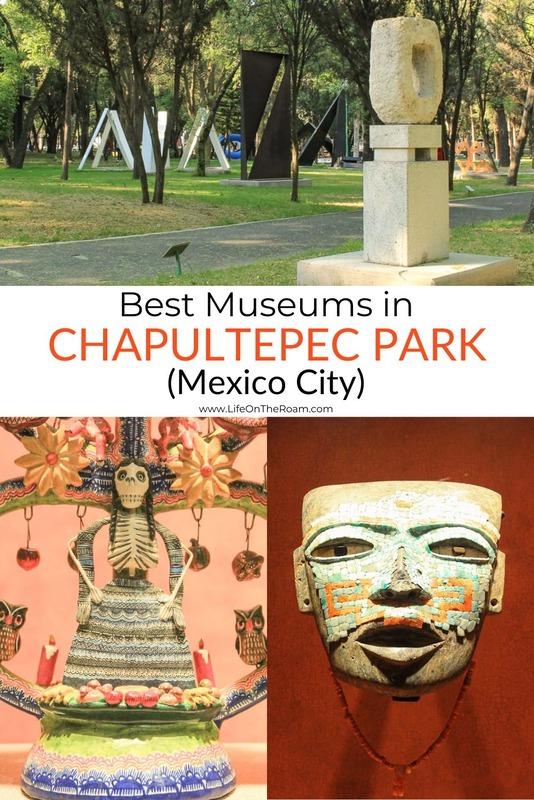
Table of Contents
The National Museum of Anthropology
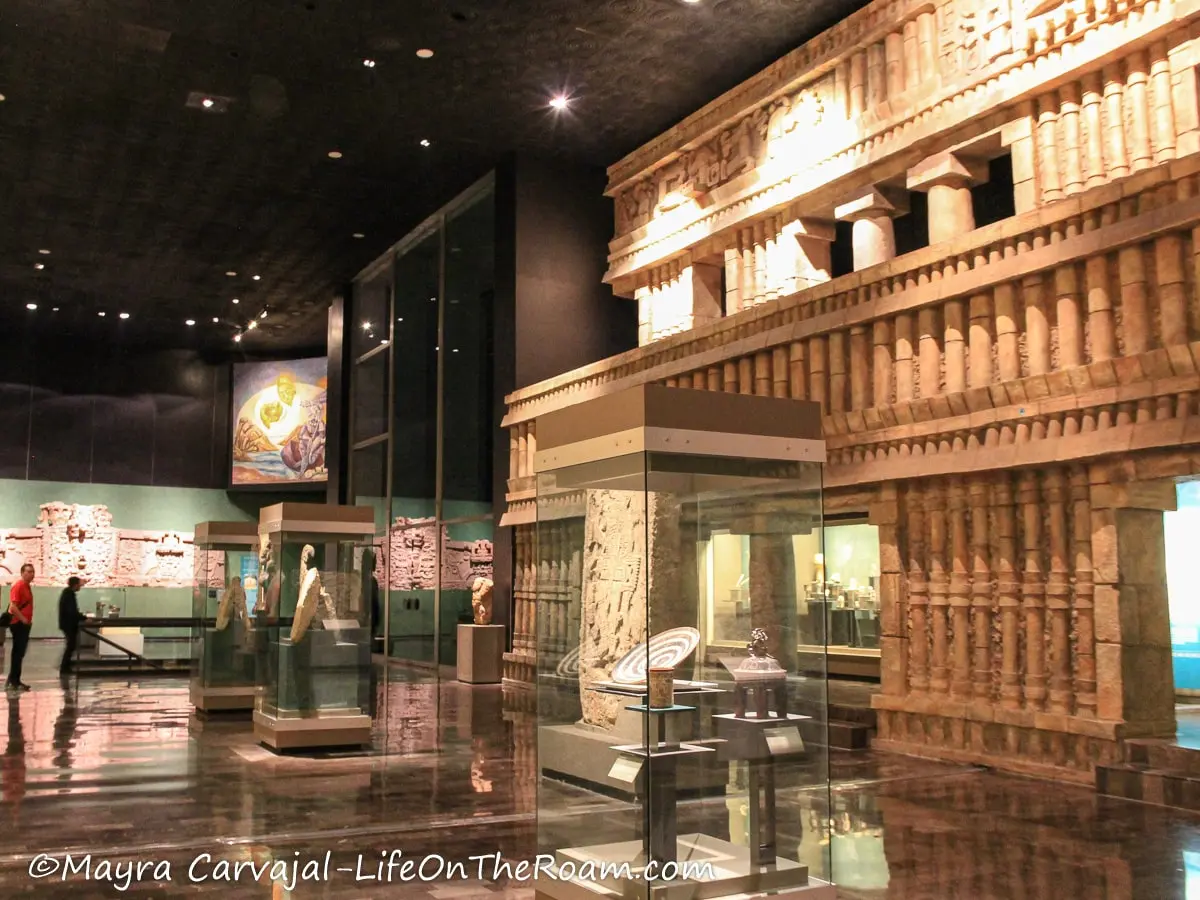
If you can only visit one Chapultepec park museum head straight to the award-winning National Museum of Anthropology (Museo Nacional de Arqueología). This place has been featured in many “Best museums in the world” lists, and it’s also the largest and most visited museum in all Mexico
Your first “Wow” moment will happen right after the entrance when you set foot in the central patio and see El Paraguas (The Umbrella).
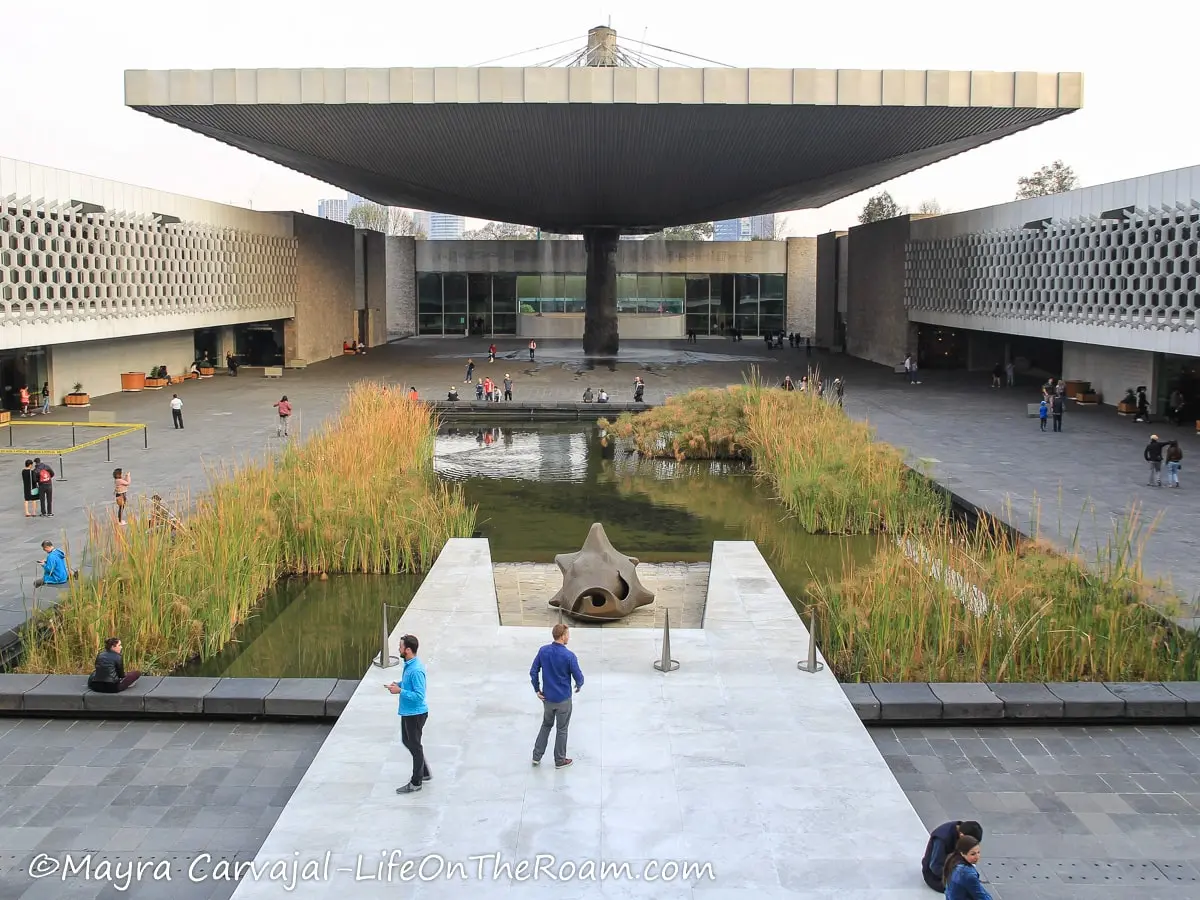
How on earth the 4,580 sq. mt (49,200 sq.ft.) massive concrete slab topping the fountain stays up there, held only by one bronze-clad column, makes you believe in magic. The engineering marvel behind the magic is unveiled only when you see aerial pictures of the complex showing 20 radial supports and 80 cables made of steel. Architect Pedro Ramírez Vázquez designed the building, opening in 1964 and using stone as the main construction material, inspired by pre-Hispanic temples.
There are many more “Wow” moments ahead as you walk through the 22 rooms of the Anthropology Museum (plus one for temporary exhibitions). When you step in the outdoor patios, with reproductions of temples surrounded by trees and plants, you feel transported to a somewhat similar environment where the original lives.
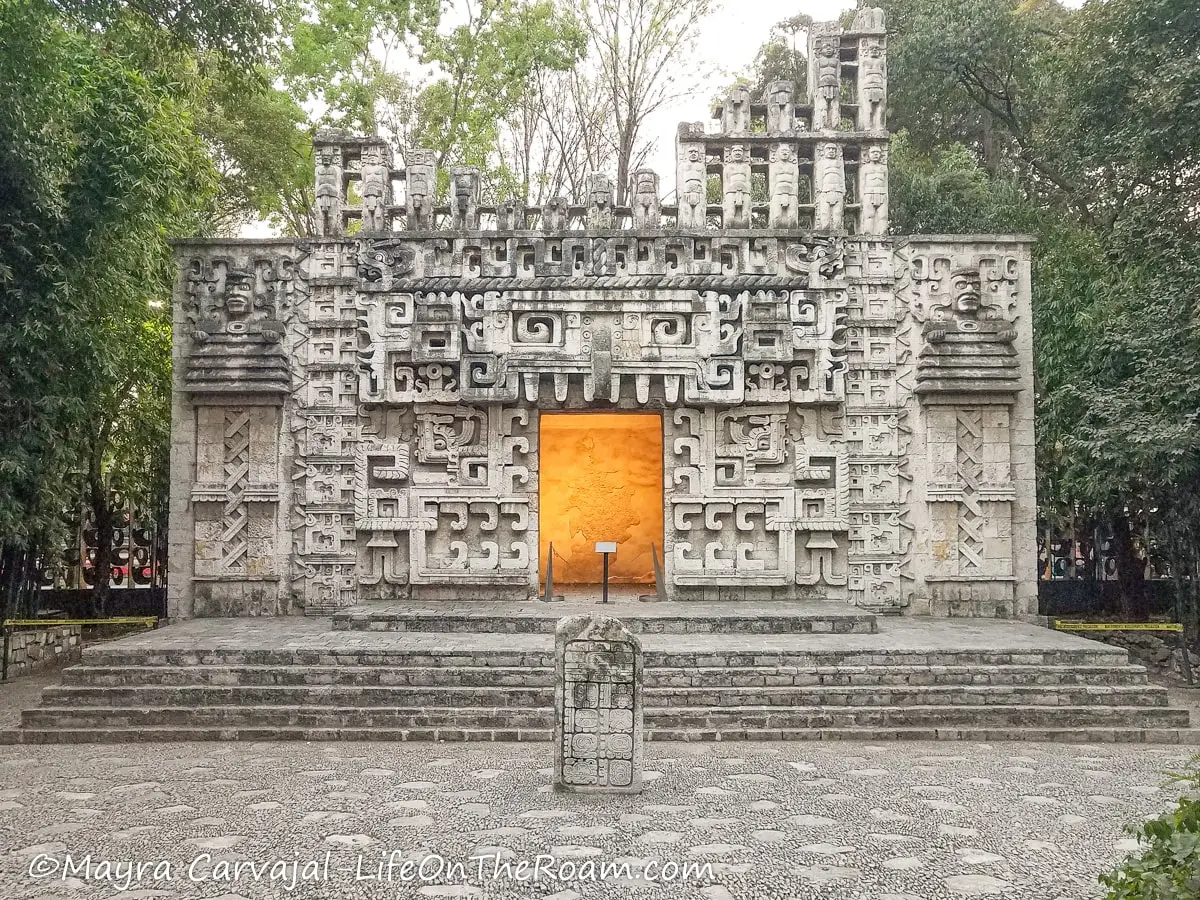
On the ground floor you’ll find the Archaeology halls, with murals, artifacts and models of tombs, altars and temples from the ancient cultures across Mexico.
The first three rooms are dedicated to the early inhabitants of the Americas (from 30,000 B.C. to 100 A.D.), and the rest of the floor takes you on a trip through the civilizations that flourished throughout Mexico.
The journey starts with the great Teotihuacan, the most influential civilization not only in Mexico, but in all Mesoamerica. Even though their lifespan was limited to most of the second century, their impact in the pre-Hispanic world outlasted them for centuries. Besides many artifacts you’ll see a huge scale model of the pyramids and their arrangement along the Avenue of the Dead, which you can walk on today. The life-size reproduction of the Quetzacoatl temple is nothing short of amazing.
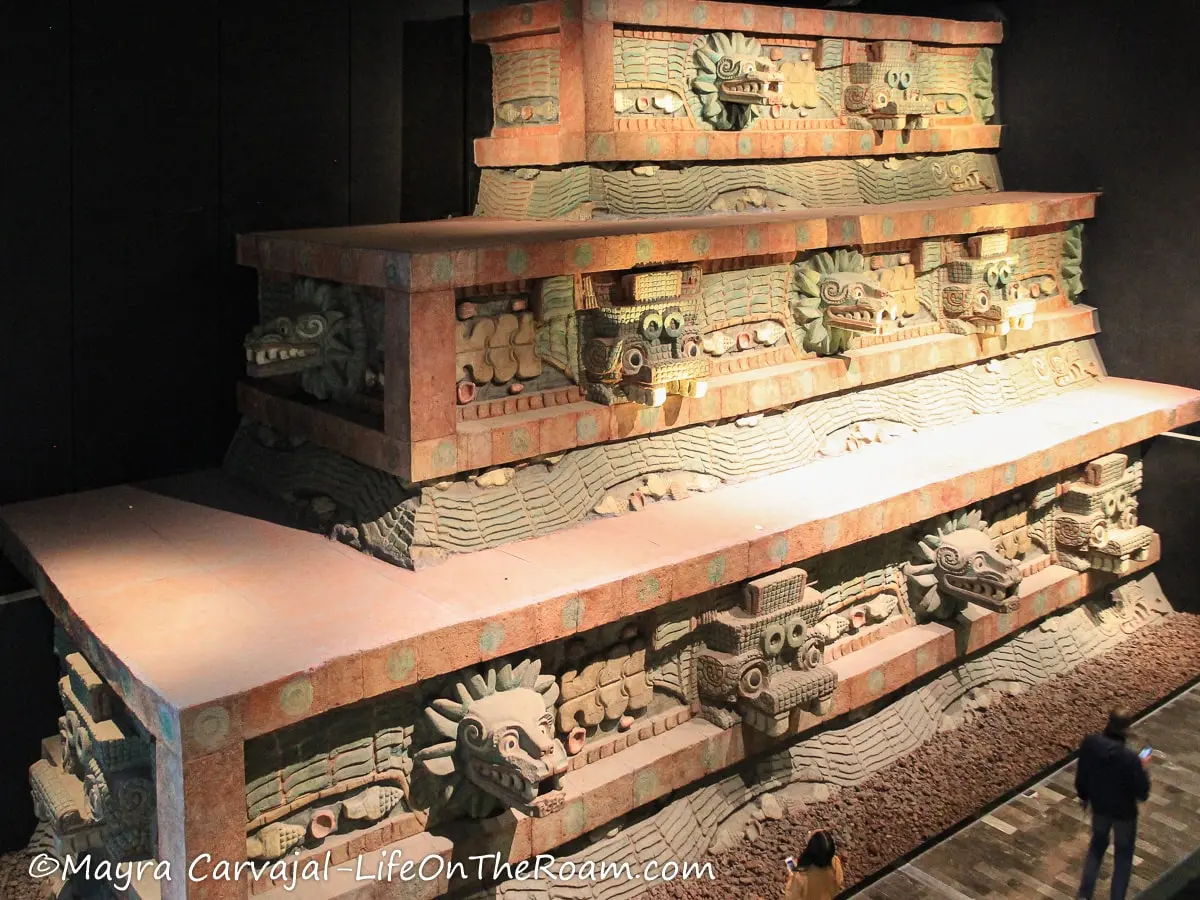
You can read my guide to visit the Teotihuacan ruins as an easy day trip from Mexico City.
The next room is dedicated to the Toltecs, followed by one of the most popular stops: the room of the Mexica civilization (pronounced meh-SHI-ka), also known as the Aztecs.
If you’re wondering what is the most famous exhibit in the Museum of Anthropology, it’s the sun stone, and you’ll find it in the Mexica room.
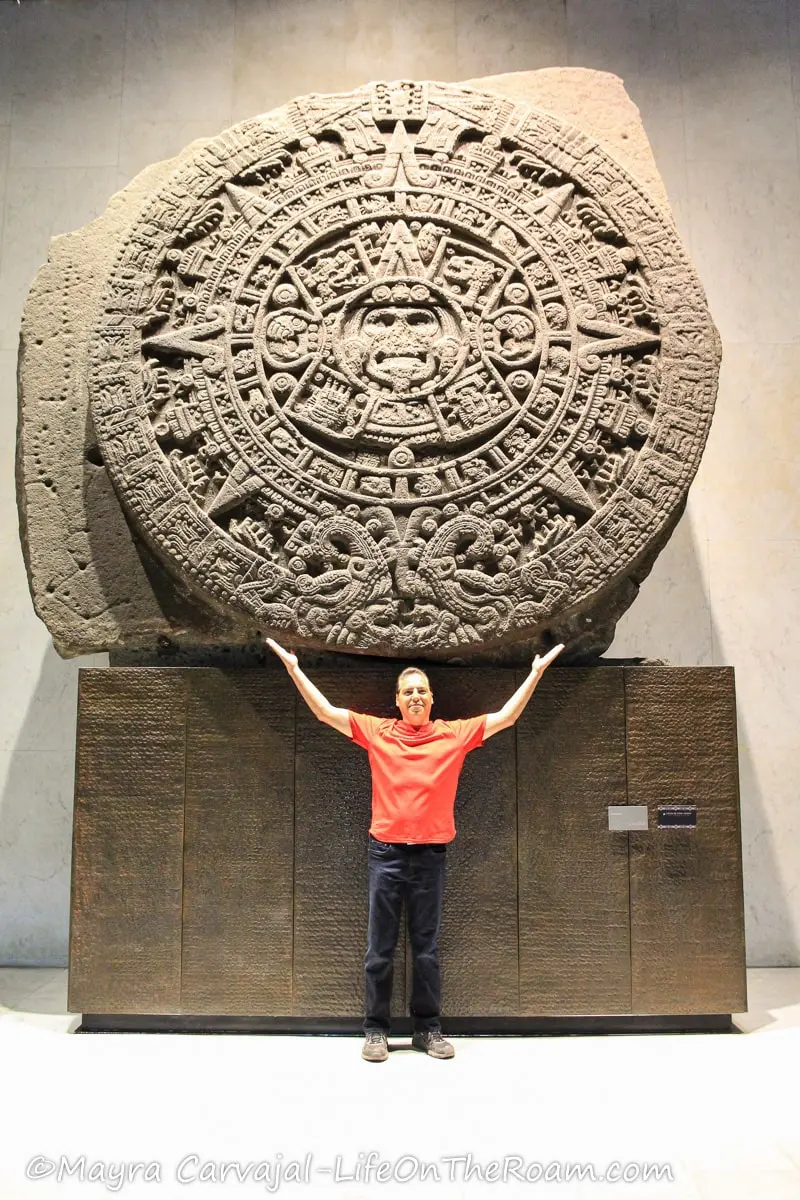
This massive sculpture was buried in the main square of Mexico City’s historic center, until it was discovered in 1970.
Even though it’s well known as the Aztec calendar (archaeologists identified carvings with the name of the days), it’s not a calendar. They later found out that it’s a sacrificial altar used in gladiator battles.
You can also see large-scale models of the Great Temple and the Tlatelolco market, which will inspire you to walk among the ruins of the Great Temple not far from here in downtown Mexico City.
The region of Oaxaca is next, where you can see some artifacts from Monte Alban, the ancient city built by the Zapotecs.
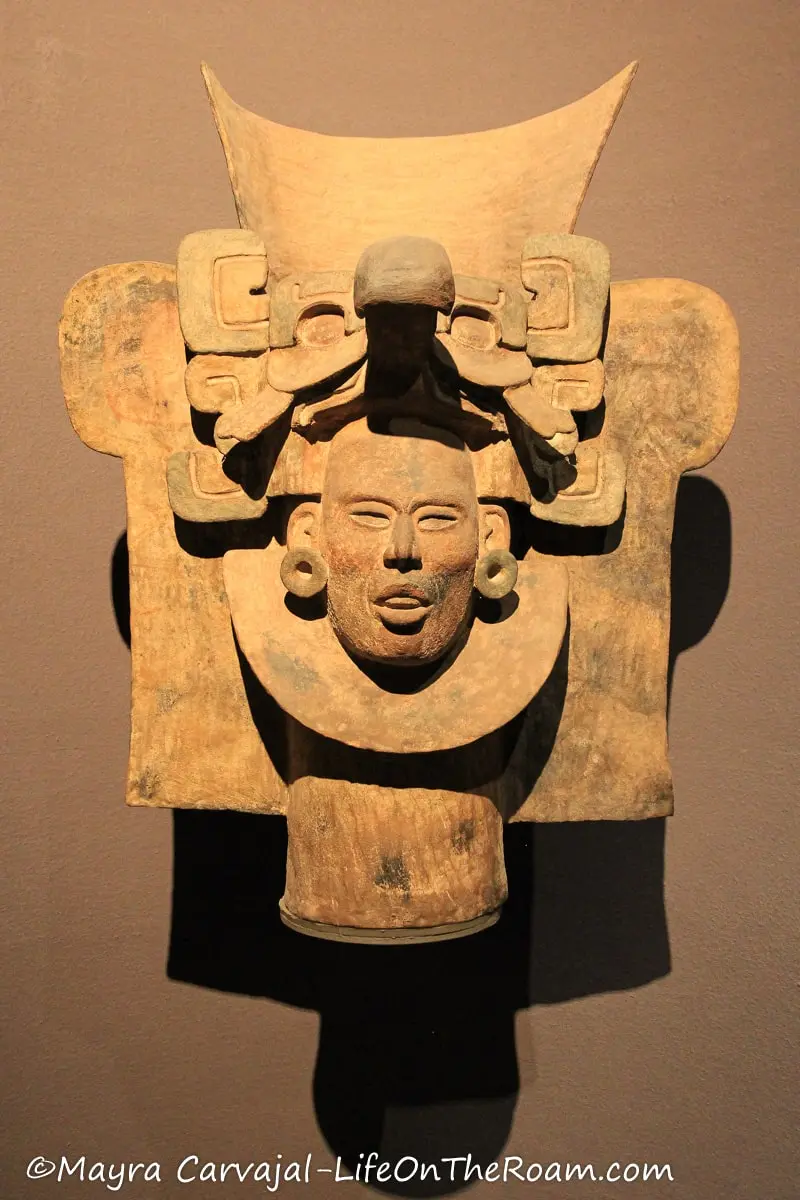
The four remaining rooms cover the regions of the gulf, north and west Mexico, and the Mayan culture, which is one of the best exhibits.
Go to the outdoor patios to see reproductions of Mayan buildings like the one found in the Acropolis in Ek Balam and reproductions of stelas found in Guatemala (the Mayan world reached Guatemala, the Yucatan Peninsula, Honduras, and Belize).
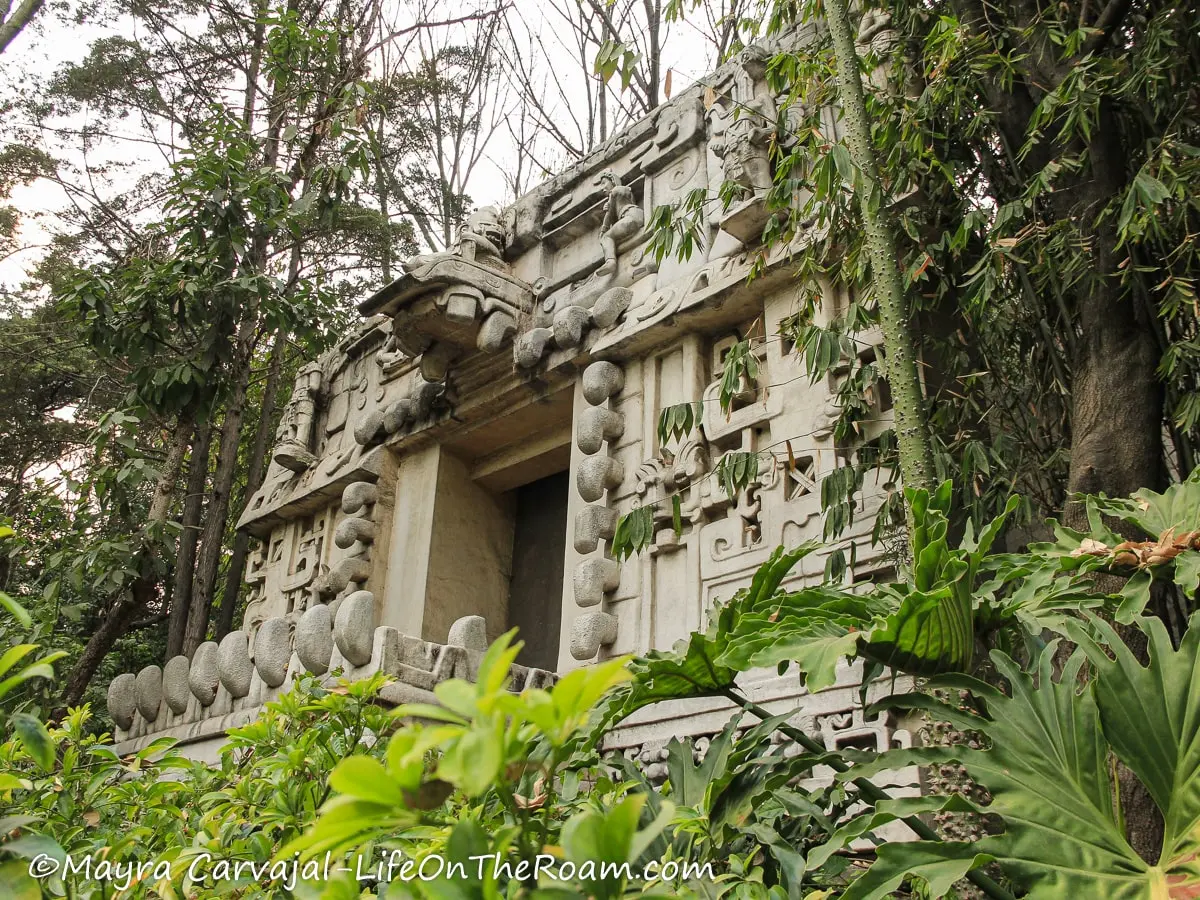
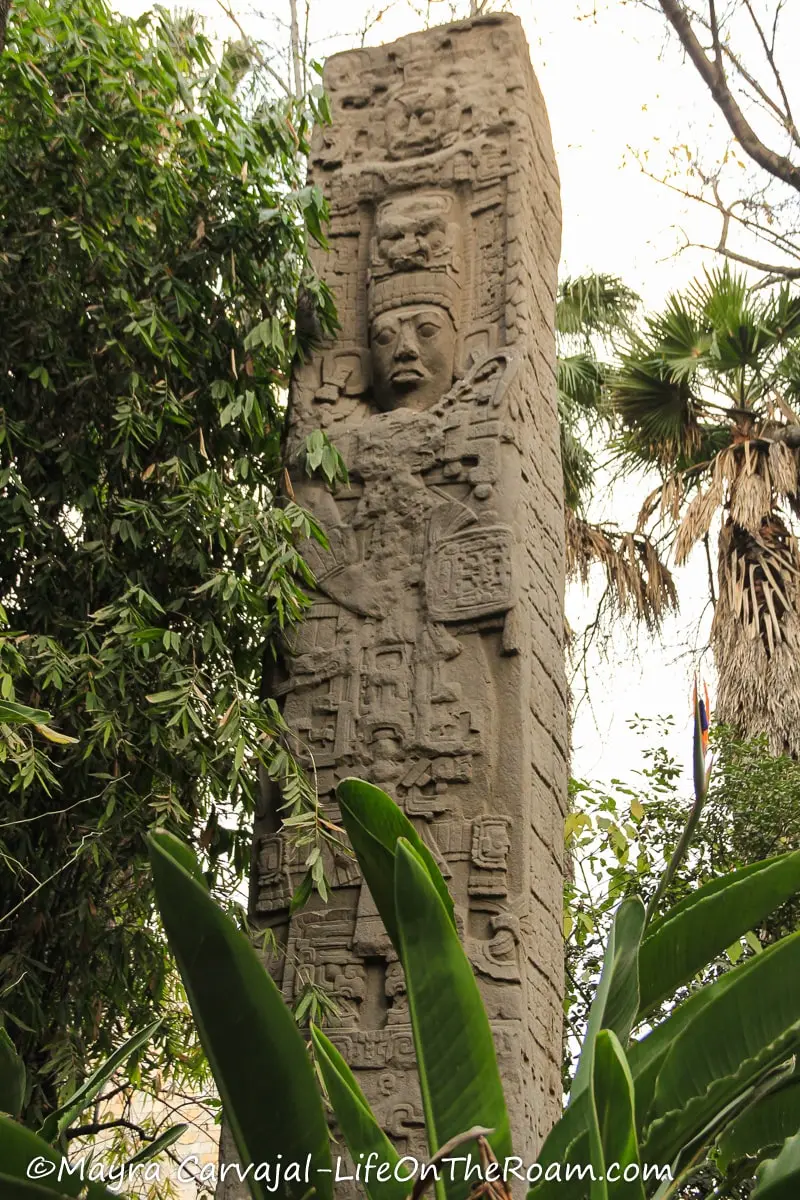
From the Gulf Coast I was impressed by the Olmec Colossal Heads sculpted from single colossal basalt boulders. These pieces date back from a period between 1500 B.C. and 400 B.C.
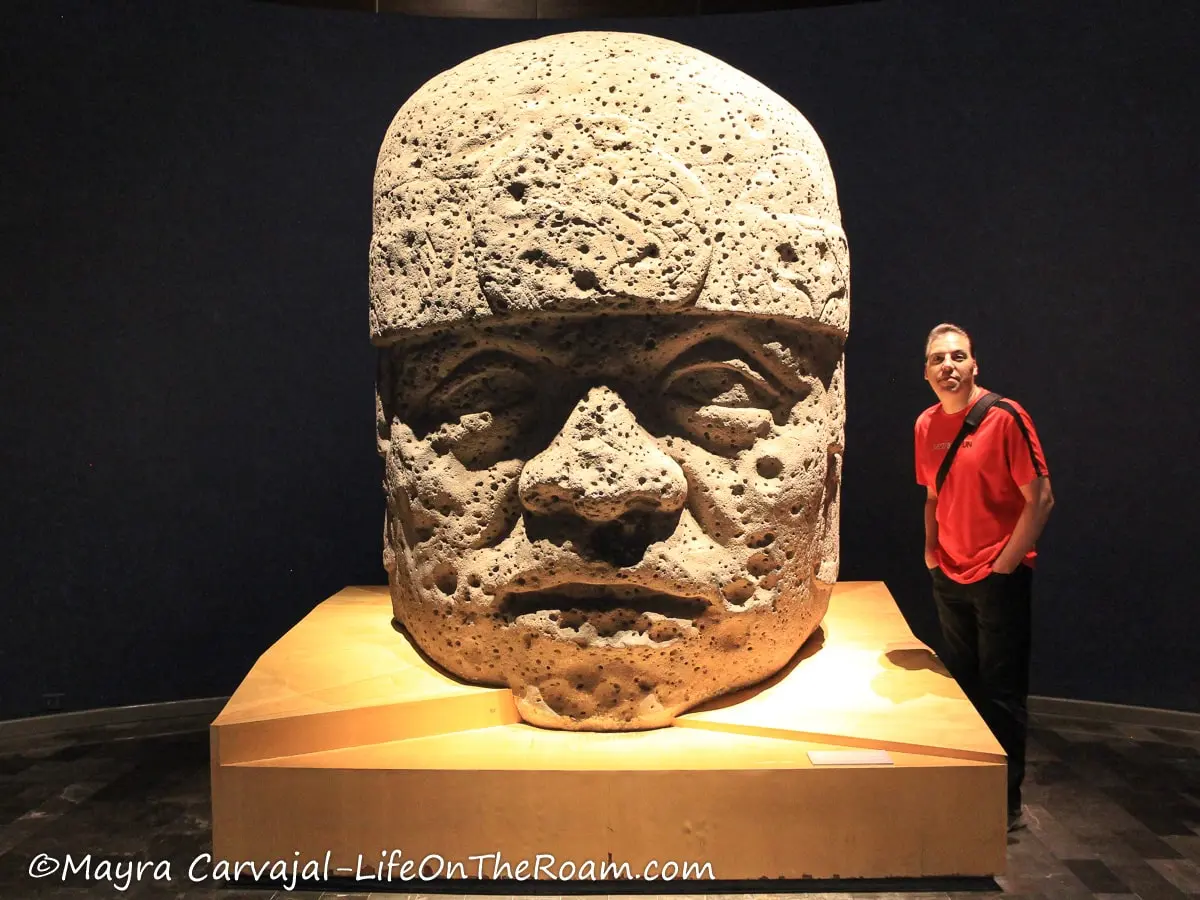
On the upper floor you’ll find the Ethnography halls: a colour fest of captivating displays of arts and crafts that teach you about the culture, traditions, and daily life of today’s indigenous communities, including housing and traditional costumes.
Some of my favourite objects were the “trees of life” representing the cultural diversity of Mexico, and everything about the Huichol art. The wood carvings are also fantastic.
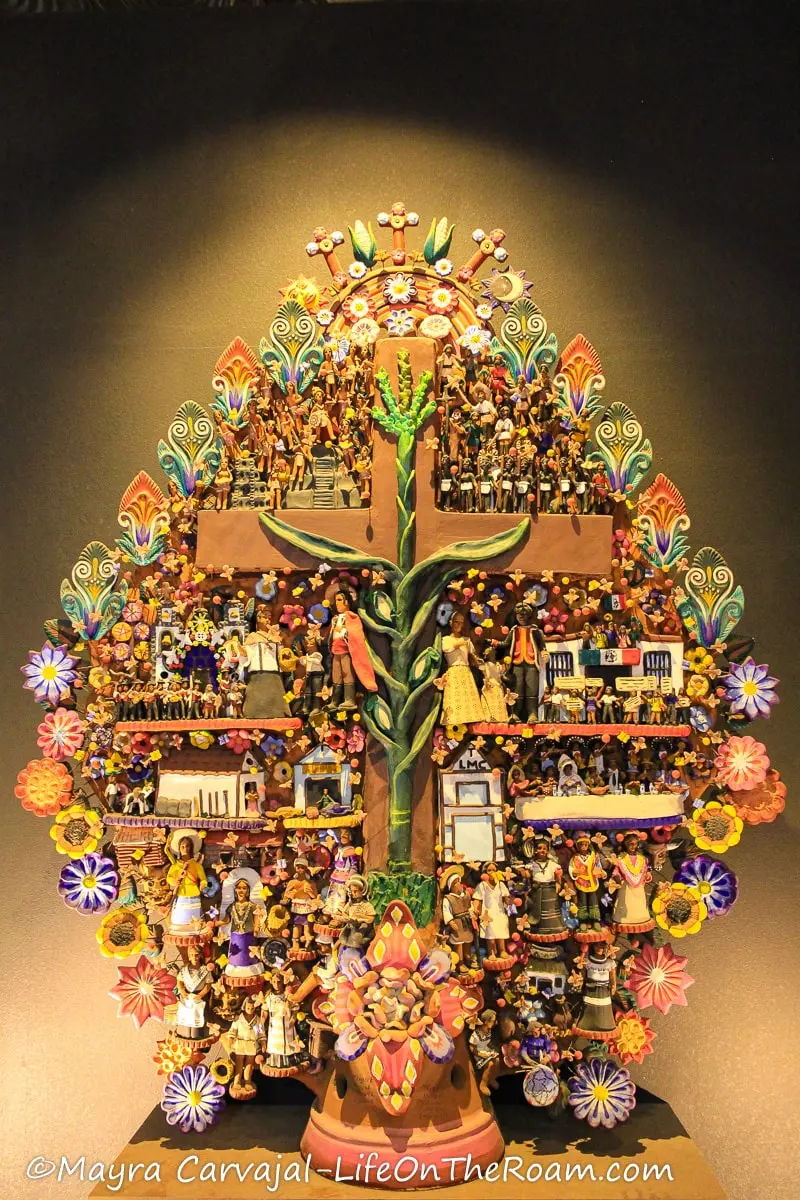
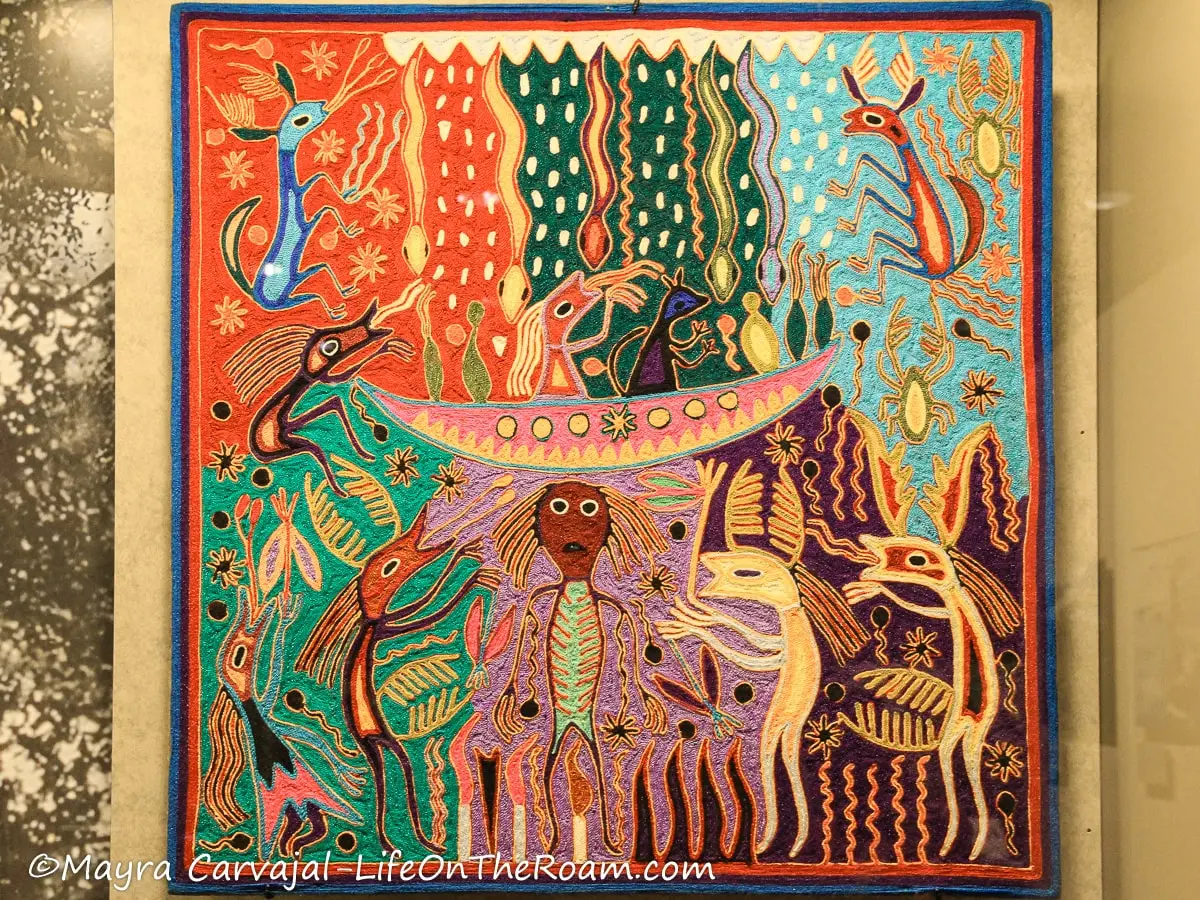
How Long Do You Need at the Anthropology Museum in Mexico City?
At least half a day, but if you want to see everything in detail, you’ll need more time. It took me two full days to go through both floors without rushing. There’s so much to see and everything is fantastic!
If you only have two or three hours to visit this museum, I recommend that you visit the Teotihuacan room, the Mexica room (you can’t leave without seeing the stone sun), and the Mayan room.
Or you can also take a 3-hour private tour of the museum that covers the highlights of the museum and the history of Mexico (includes admission fee).
Book this private tour, with a 5/5 rating based on more than 185 reviews
The museum has a cafe, a restaurant, and a shop on site.
Av. Paseo de la Reforma, Bosque de Chapultepec Sección I; Closest subway station: Auditorio; Open Tue. to Sun.: 10AM-5PM; General admission: MXN$90
The National Museum of History
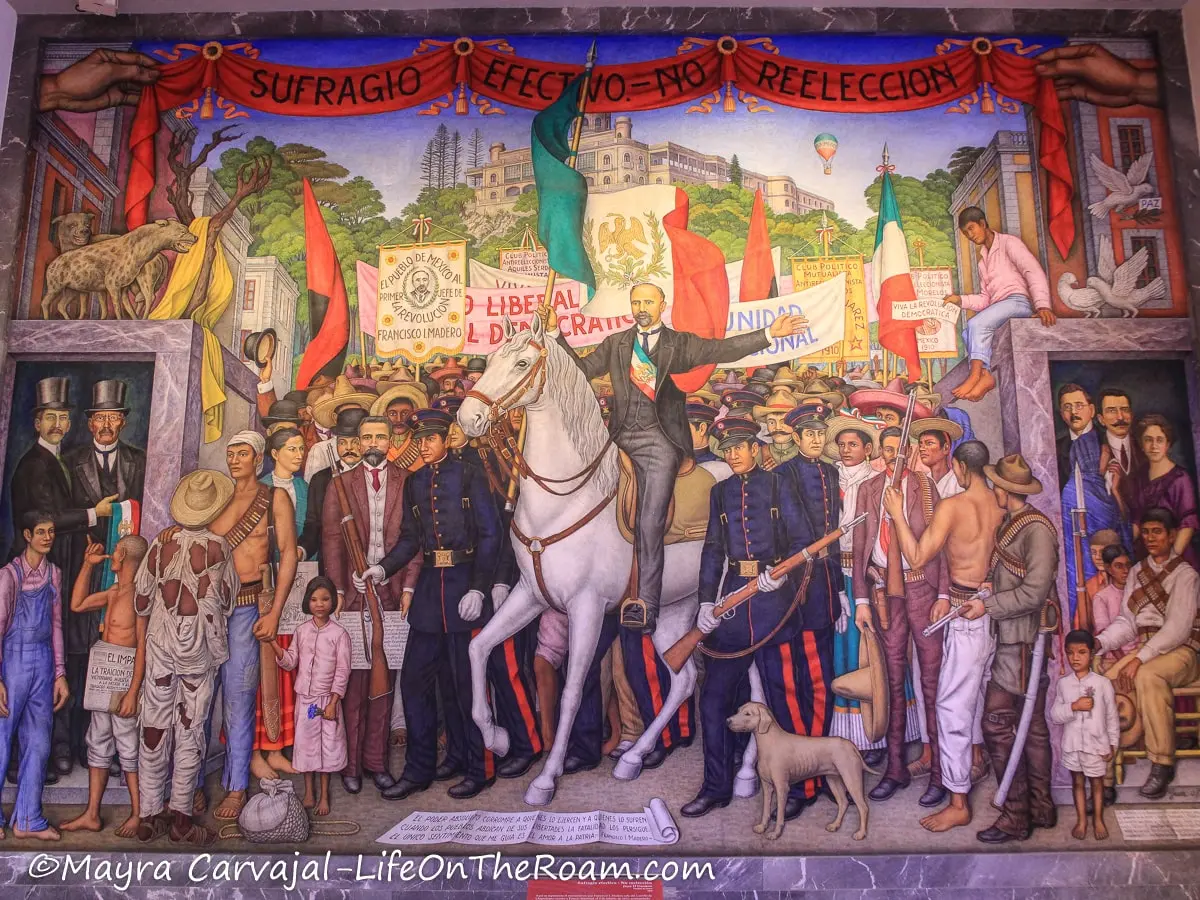
The National Museum of History (Museo Nacional de Historia) is located inside the Chapultepec Castle and, as you can tell by its name, it’s all about Mexico’s history (and some more). The museum’s content is organized in two main sections.
The first section tells the history of Mexico from pre-Hispanic times, followed by the establishment of the first empire after the conquest by the Spanish crown, and the independence movement.
After that, for a brief period, Mexico was part of another empire when Maximilian of Habsburg and his wife, Charlotte of Belgium, moved to this side of the pond. But, how did Mexico end up with an Austrian ruler?
In 1861 Mexico didn’t have enough money to pay its debt and the United States was breathing on its neck eager to take some land. Napoleon III from France wanted his money and was eager to curb the expansion of the USA so he said Let’s invade Mexico!
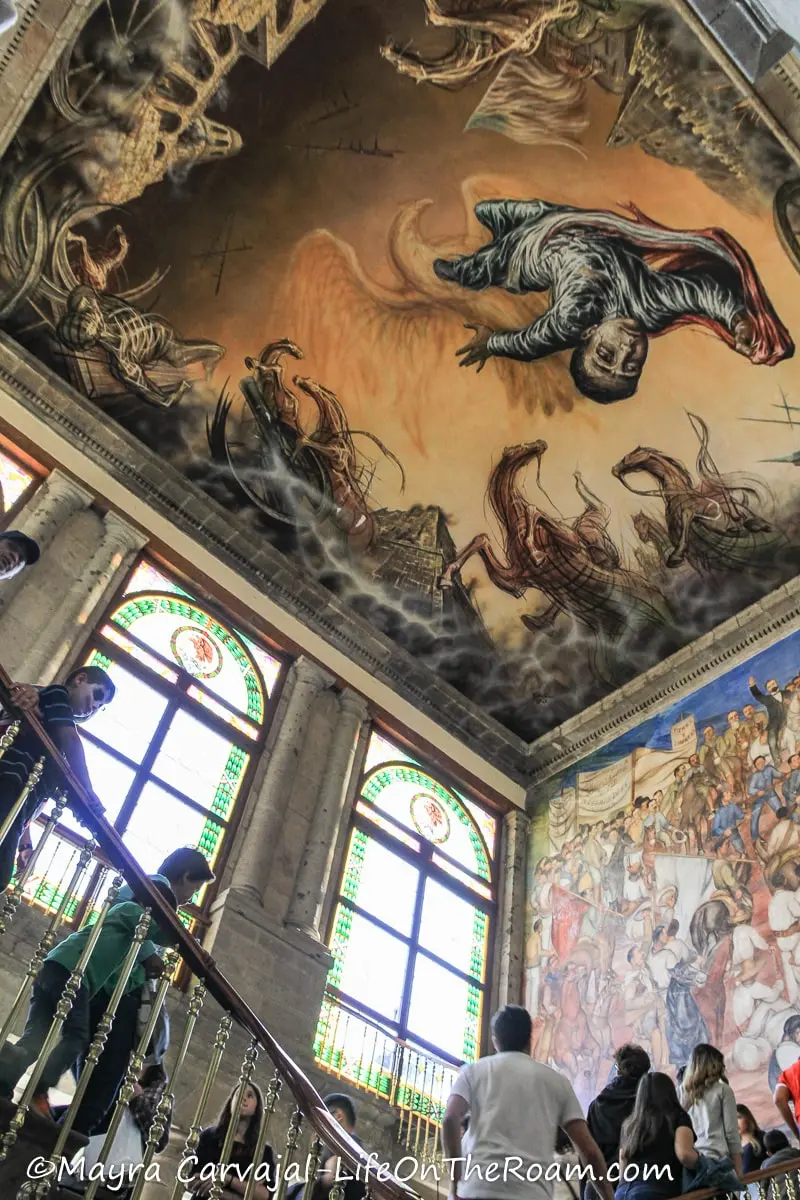
After several battles (one of which was the famous battle of Puebla) he offered the crown to Maximilian, who landed in Veracruz in 1864 to establish the second empire. All went relatively well for him until Napoleon had to pull his army and his financial support at the same time that the republican resistance was growing.
Maximilian retreated to the city of Queretaro, where he was executed in 1867, and Benito Juárez formally returned to his role of president of Mexico.
At the National Museum of History you’ll also find a remarkable collection of decorative arts displayed in beautiful rooms, including some special pieces like the door and the vase below, and a fountain, all made of malachite and sent by the czar of Russia, Nicholas I, to the Great Exposition of 1851 in London.
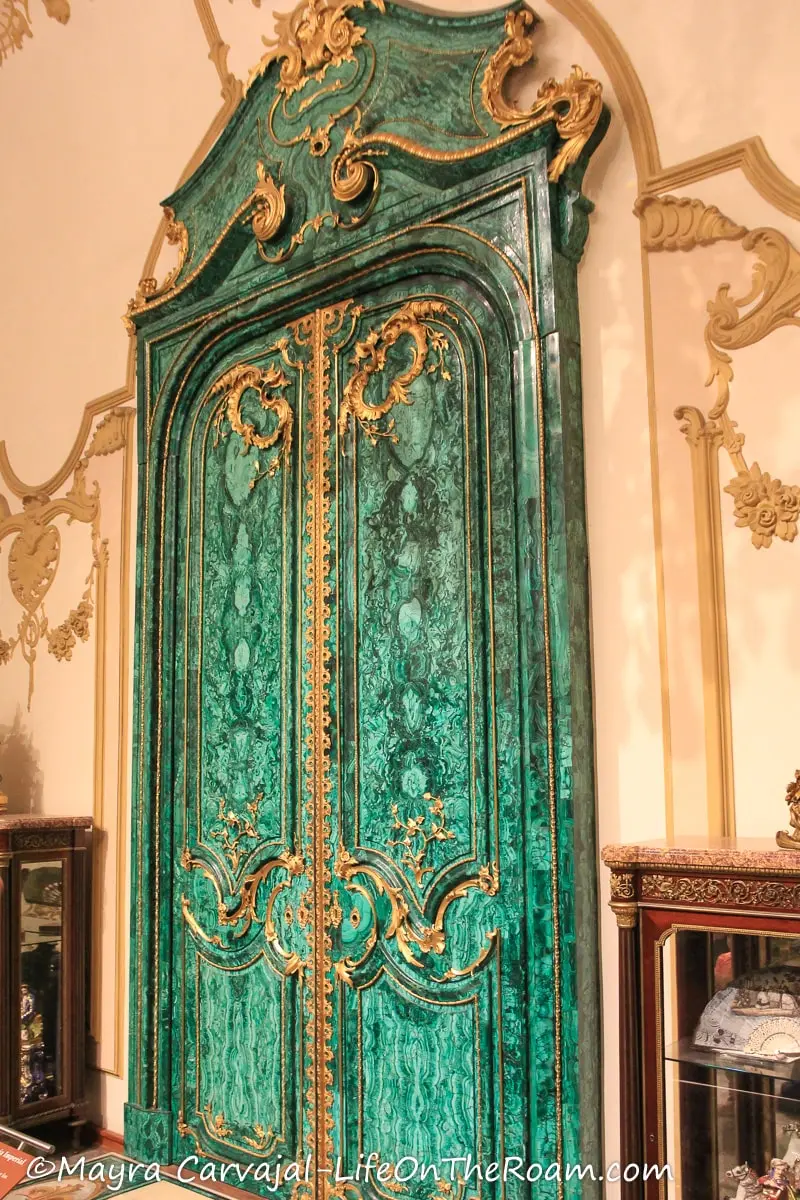
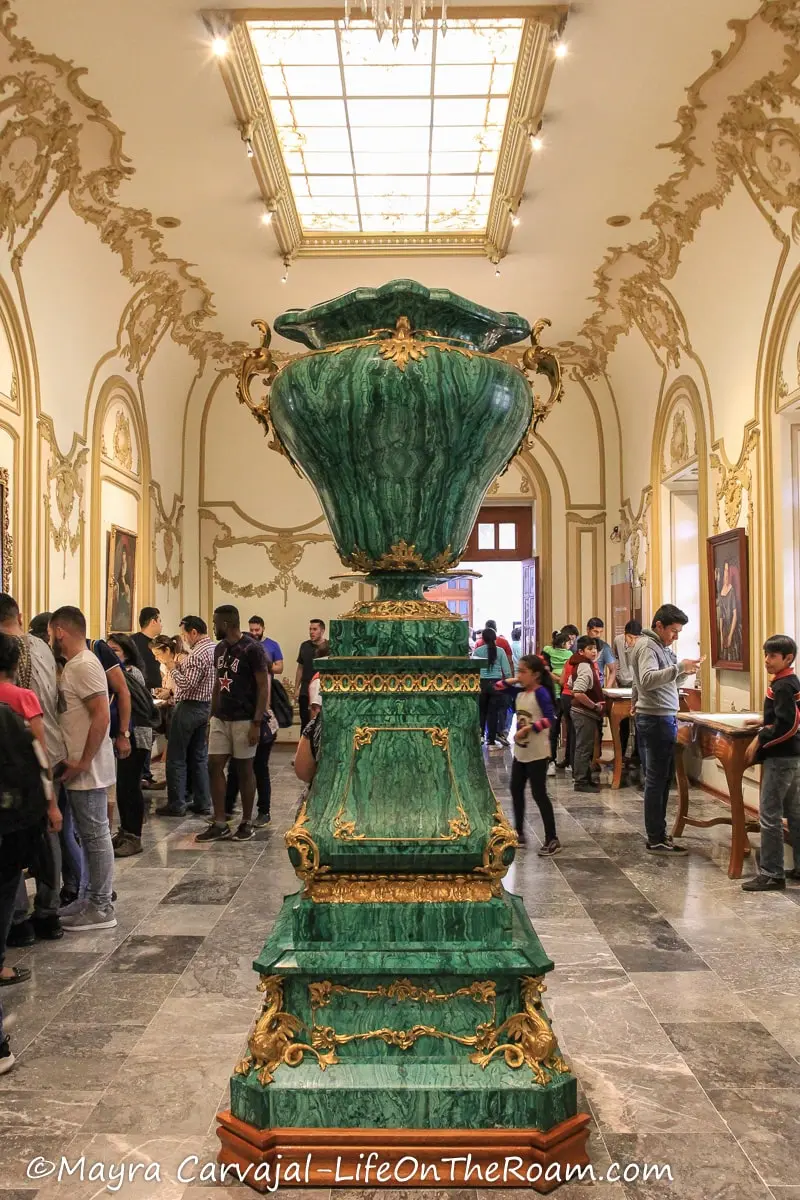
They ended up here after they were never displayed at the National Palace, as originally intended.
You’ll also find large murals and an exhibit of the horse carriages that belonged to Maximilian, including the magnificent Baroque-style carriage made for him in Milan in 1864, decorated with cherubims and silver and bronze mouldings.
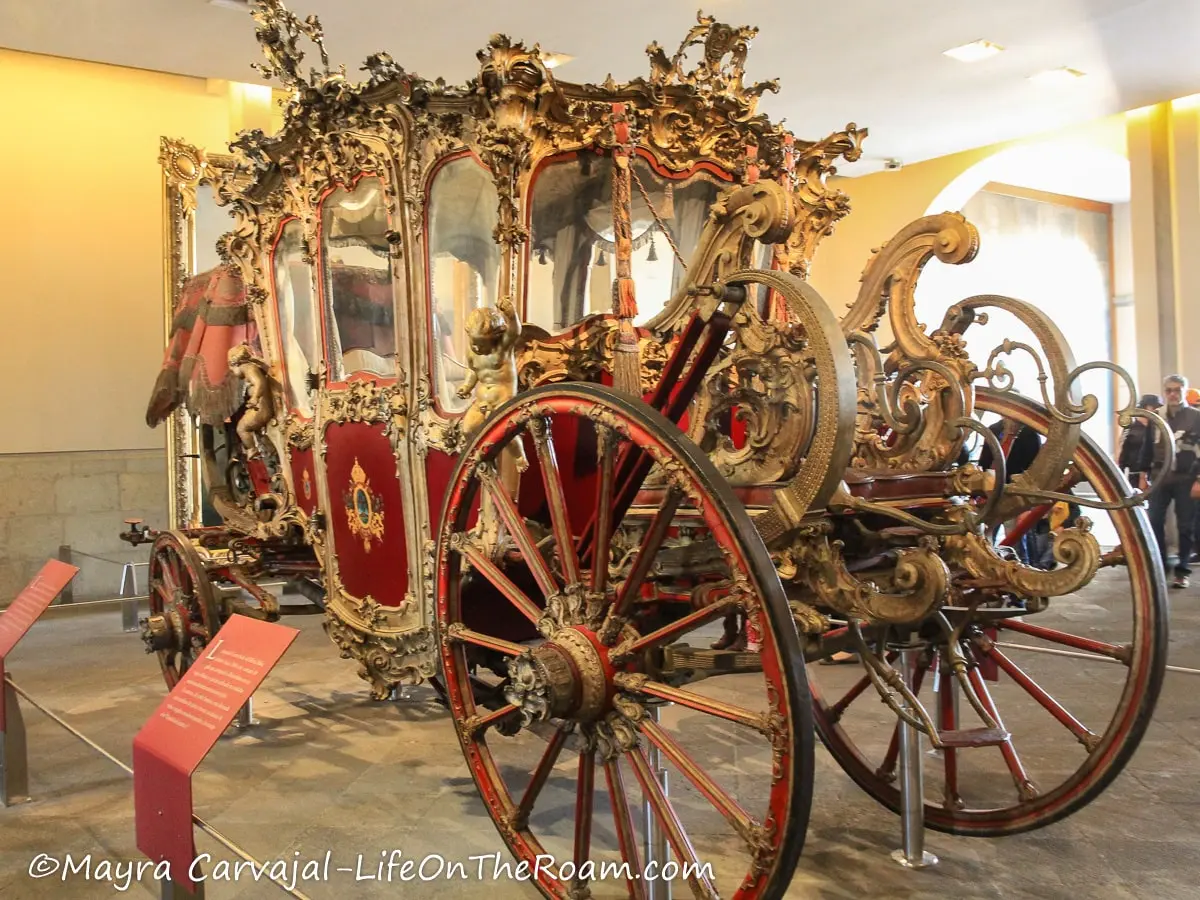
The second section is called “El Alcázar” -a Spanish palace or fortress-, which was the residential area of the castle. Here, you’ll have a glimpse of the life of its occupants and the historical events that took place between the 19th century and the years of the Revolution.
Check out the impressive woodwork of the dining room, commissioned by President Porfirio Díaz, and the silverware that belonged to Maximilian.
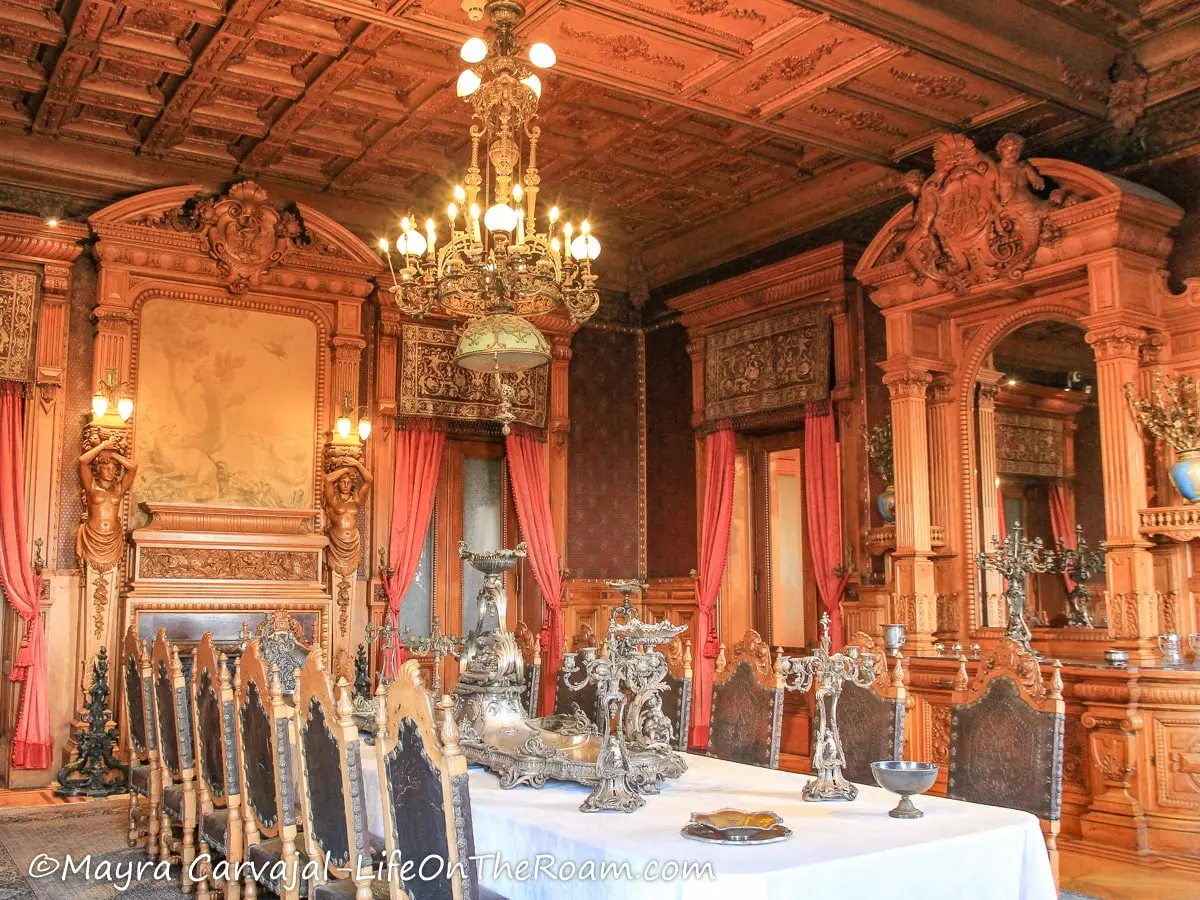
If you only have a few hours to spend in the park you can enjoy a 5-hour private tour of the Chapultepec Castle and the National Museum of Anthropology, with a few stops around Chapultepec Park (includes admission fees).
Book this tour, with a rating of 5/5 based on more than 60 reviews
Bosque de Chapultepec Sección I; Open Tue. to Sun.: 9AM-5PM; General admission: MXN$90 (cash only).
Tamayo Museum
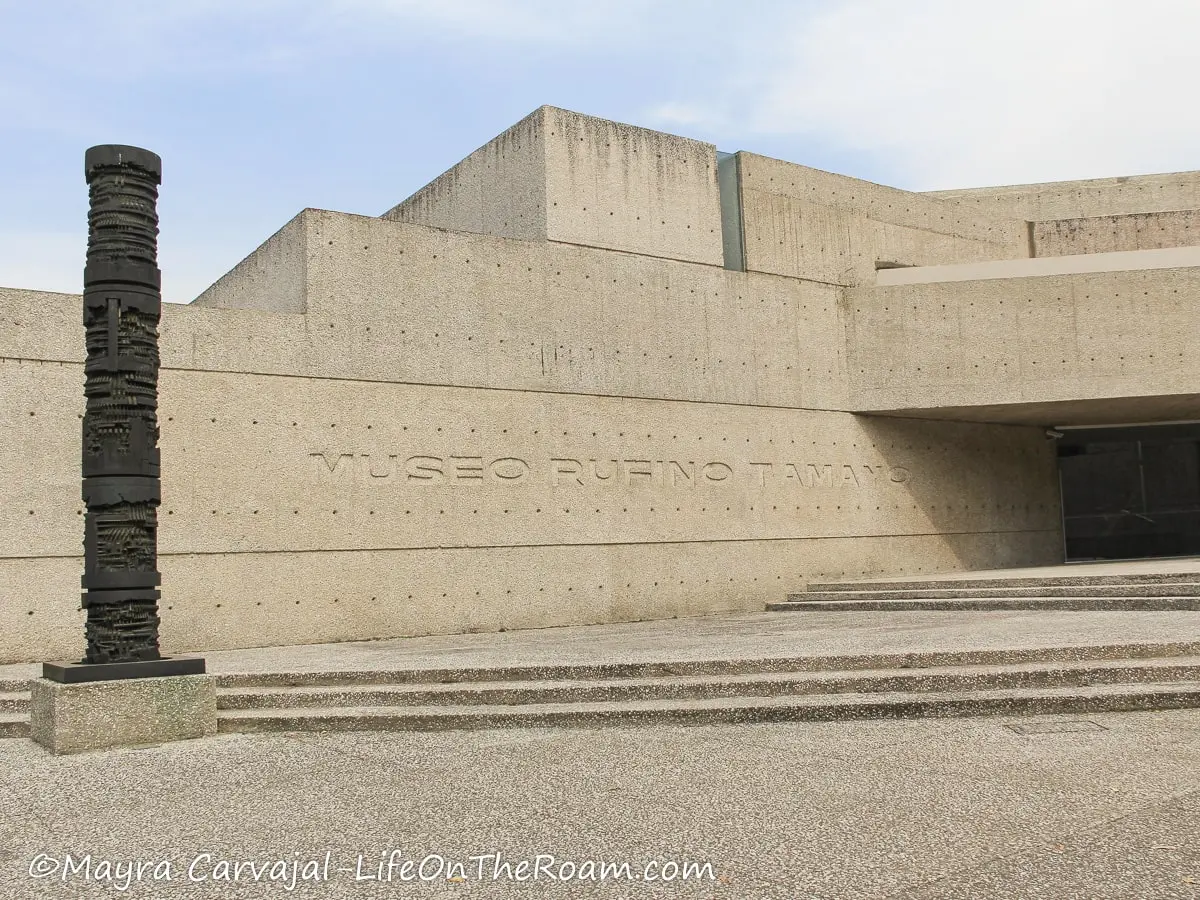
A couple of large sculptures welcome you at the entrance of the Tamayo Museum, where you’ll find the private collection belonging to Mexican painter Rufino Tamayo, born in the state of Oacaxa. It comprises nearly 300 pieces made by national and international artists after 1960, including painting, sculpture, and visual arts, and names such as Picasso, Isamu Noguchi, Miró, and Francis Bacon.
In addition to temporary exhibits you’ll see the fruits of Tamayo’s artistic labour, which spanned over seven decades in the 20th century before his death in 1991.
Most of his artistic legacy is in the form of oil paintings (mainly portraits, nature, and still life), but he also created sculptures and murals, like the ones you can see at the Palace of Fine Arts in Mexico City.
Rufino Tamayo is one Mexico’s most famous artists who created a unique aesthetic merging influences from his pre-Hispanic heritage with the post-war art movements he was exposed to during his travels to New York City and Europe. Tamayo’s work can be found all over the world.
Museo Tamayo
Av. Paseo de La Reforma 51, Bosque de Chapultepec Sección I; Closest subway station: Chapultepec; Open Tue. to Sun.: 10AM-6PM; General admission: MXN$85 (cash only); Free admission on Sunday.
The Museum of Modern Art (and Sculpture Garden)

The exhibits at the Museum of Modern Art (Museo de Arte Moderno) range from works that catapulted the modern art movement in Mexico during the first half of the 20th century to work currently produced by today’s artists.
Temporary exhibits cover related fields like the world of design, and reflections about the connection of art with political and social events.
The building, with an organic shape, was conceived by architects Pedro Ramírez Vázquez (who designed the Museum of Anthropology) and Rafael Mijares, and it’s a masterpiece of modern architecture. I loved the wood floor.
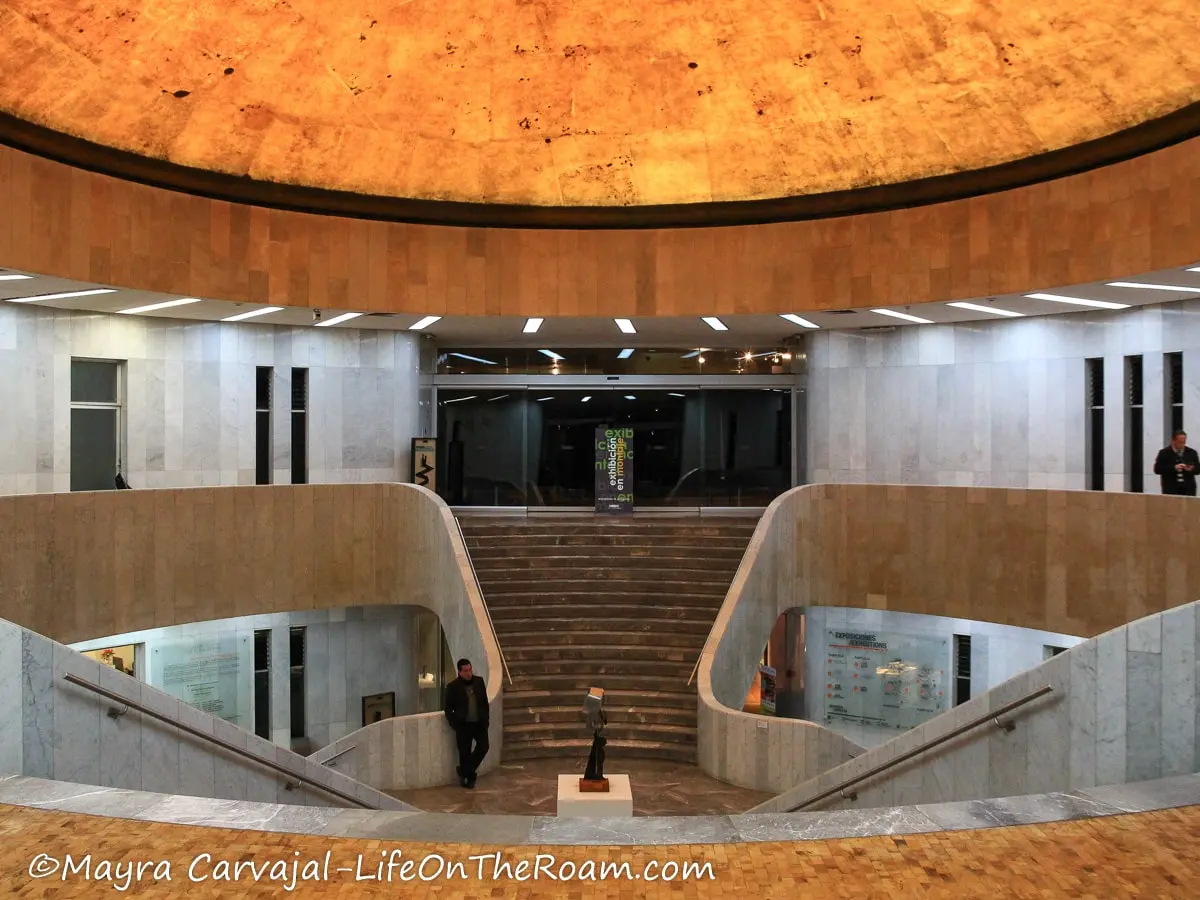
Make some time to wander around the wonderful sculpture garden and see 75 artworks created in the 20th and the 21st century by the hands of renowned sculptors from Mexico and abroad. Since I love the mix of art and outdoors, this is one of my favourite spaces in Chapultepec Park.
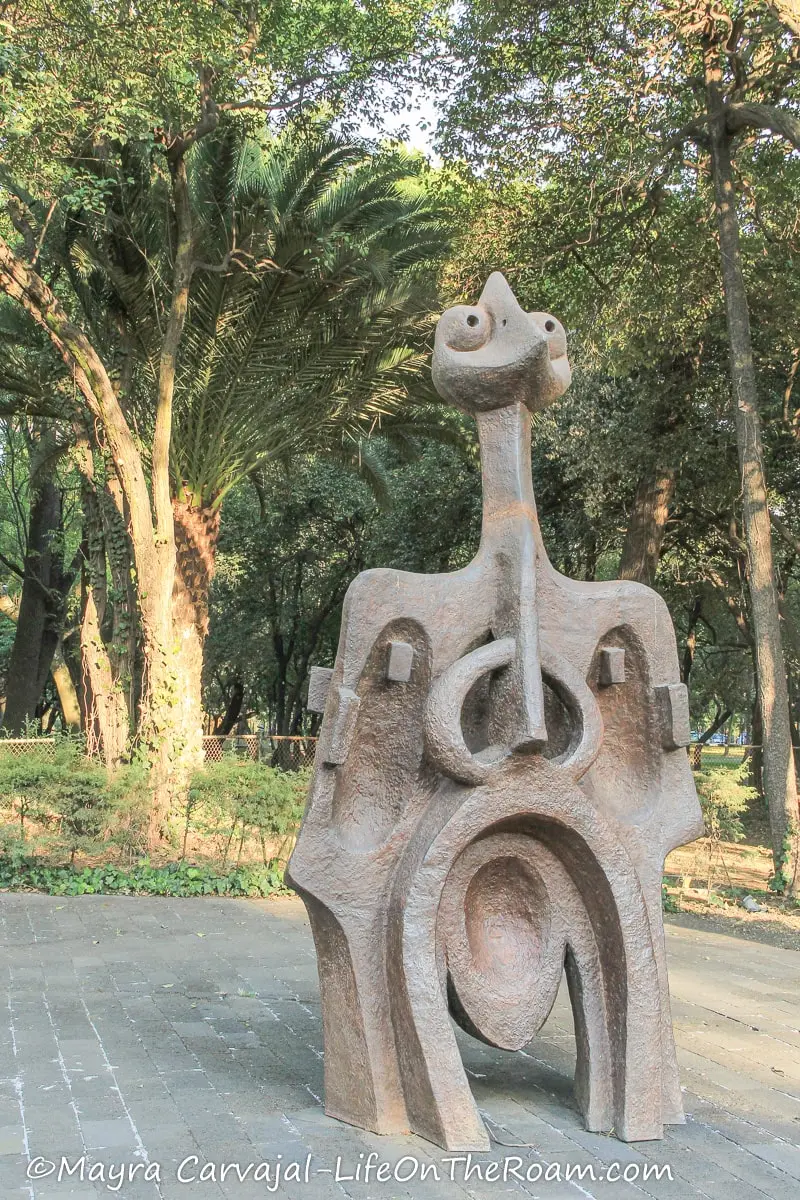
The museum has a café and a really cool store worth checking out.
Near the intersection of Av. Paseo de La Reforma and Calz, Mahatma Gandhi, Bosque de Chapultepec Sección 1; Closest subway station: Chapultepec; Open Tue. to Sun.: 10:15AM-5:45PM; General admission: MXN$85 (cash only); Free admission on Sunday.
Site Museum and Chapultepec Park Visitor Center
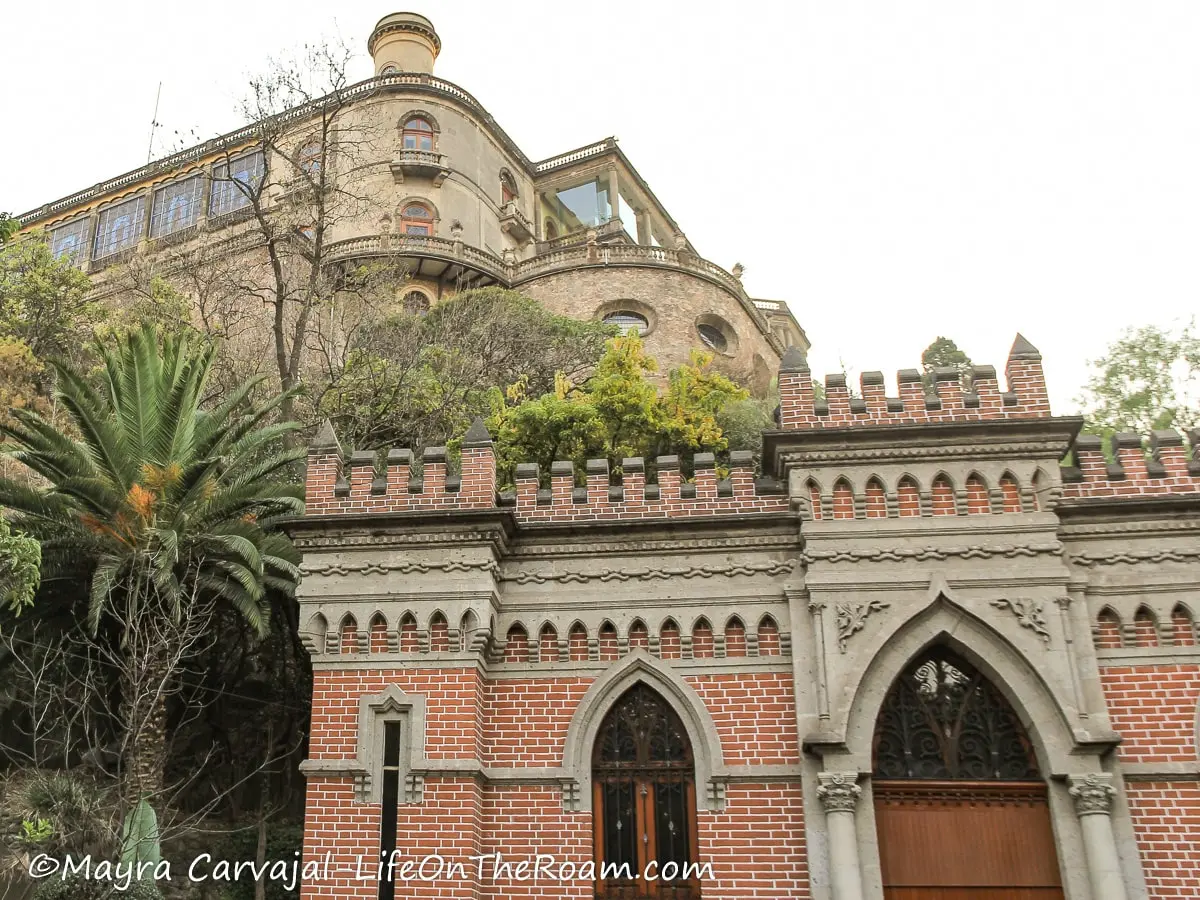
Located in what was the main entrance of a military school and under the watchful eye of the Chapultepec castle, this small museum is the place to learn about the interesting history and architecture of Chapultepec Park, one of the oldest parks in the world.
Back in the 15th century, when this area was considered “the outskirts”, Aztec rulers designed the gardens, brought “exotic” animals, and built fish hatcheries.
Did you know that right after the conquest in 1521, Hernán Cortés declared that this park was for him and him only? That didn’t last too long as in 1530 Carlos V (the King of Spain and the name of a popular chocolate bar in Mexico) said Nah! All forests and springs are for everybody’s enjoyment!
The display at the Site Museum (Museo de Sitio) includes artifacts, photography, drawings, and plans. You can see the park in plans drawn by Cortés in the 16th century.
Here you can also check Chapultepec Park’s busy schedule, which is normally packed with events and cultural activities to enrich your visit.
General Miguel Hidalgo, Bosque de Chapultepec Sección I; Closest subway station: Chapultepec; Open Tue. to Sun.: 10AM-5PM; Free admission
With a wide selection of museums you’ll be able to experience culture while you’re immersed in beautiful natural surroundings. Learn everything you can do here in my post about the best things to do in Chapultepec Park.
YOU MAY ALSO WANT TO READ
BOOKING FLIGHTS AND ACCOMMODATIONS
Book your flight without losing your shirt
We check Momondo to find great deals to book our flights. Also, check Great Escape: it combines the listings from Expedia, Kiwi, Kayak, (and Skyscanner on the premium service) to find the best airfares.
To find a place to stay for less
Booking.com: this site combines everything under the sun. You’ll find hotels, apartments, B&B, hostels, rooms, etc., with all sort of filters to make your search a breeze.
Hotwire: the first site I check when we plan to stay at a hotel for a few nights. You can save anything from 20% to 60%. Use the search filter to find what you want and you’ll end up with three listings that match your criteria. You’ll know which one you’ll get after you book. If you can handle a little bit of uncertainty you can score big savings.
House Sitting: you take care of people’s pets and house for free while staying for free. It’s the closest thing to experiencing a place “like a local”. But it comes with responsibilities… Are you an animal lover? It may become your new way to travel.
To get travel insurance
SafetyWing: travel medical insurance that gives us peace of mind knowing that we’re covered in case of emergency. It’s convenient, affordable, and suitable for digital nomads who spend a long time outside their home country.
Check the full list of travel resources on my Resource Page for more options and savings
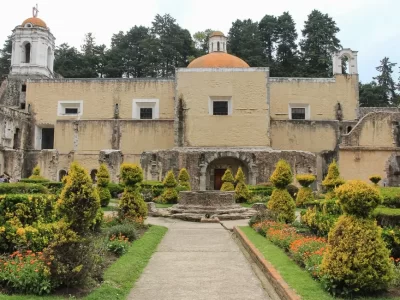
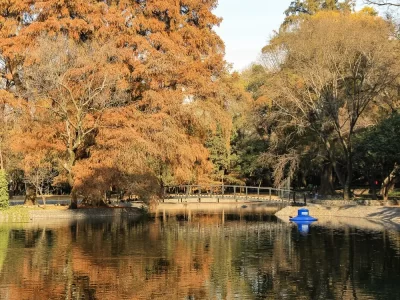
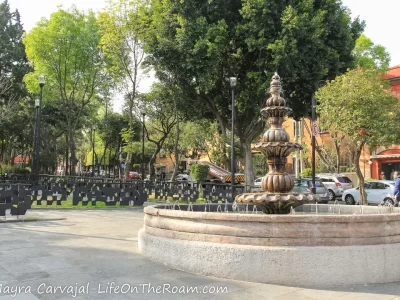
Glorious!
Thank you so much for all your pictures and descriptions! I feel like I can travel from my desk! It’s like a micro vacation!
Thank you so much!
Thank you so much for reading!
This looks so amazing!
Wow these museums are amazing The National Museum of Anthropology would be my favourite, I think I could spend a whole day there…whilst that would be my favourite the others look just as amazing…Thanks for sharing
You could easily spend two days there. I did!
And I wouldn’t mind going back.